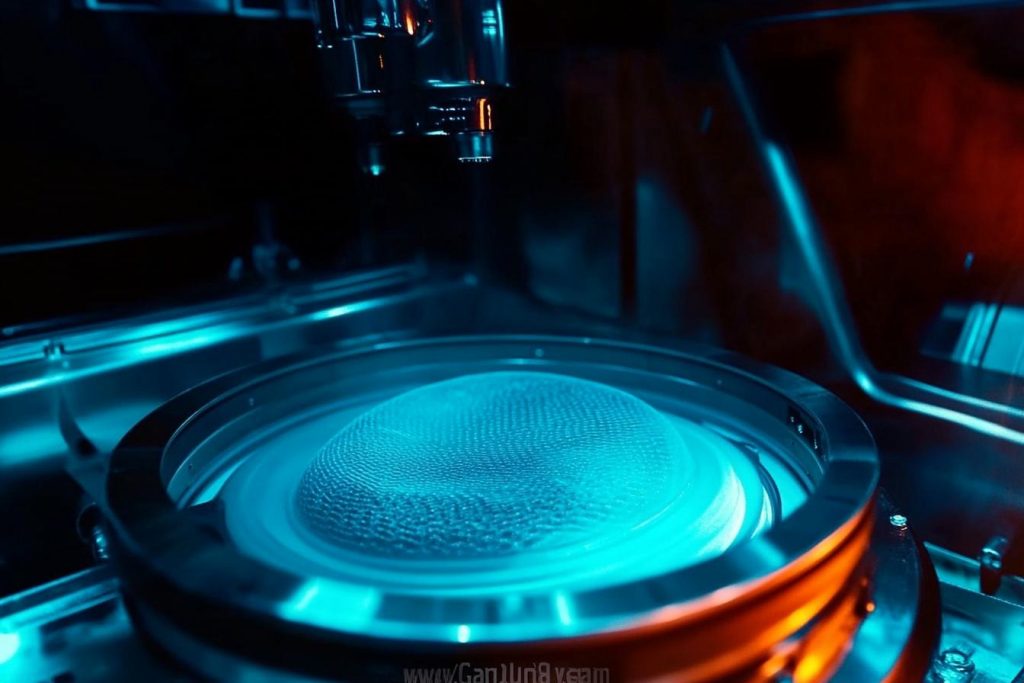
As space agencies push further into the cosmos, they need more than just rockets—they need breakthroughs in material science. From radiation-blocking fabrics to ultra-lightweight metals, engineers are developing futuristic materials that can withstand the extreme demands of space travel. These innovations are reshaping what’s possible in spacecraft design, astronaut safety, and deep-space exploration. Each one holds the potential to redefine the future of interplanetary missions.
Graphene Aerogel

This ultra-light yet incredibly strong material is composed of graphene—a form of carbon arranged in a single atomic layer. Aerogels are known for their low density and high porosity, making them ideal for insulating spacecraft without adding weight. Graphene aerogel combines thermal insulation with electrical conductivity, opening up possibilities for both structural components and electronic systems in space missions. Its feather-light nature makes it perfect for long-haul journeys where every gram counts.
Self-Healing Polymers

Spacecraft face constant micro-impacts from debris and micrometeorites. Self-healing polymers are designed to “repair” themselves after sustaining damage, sealing small punctures automatically. These materials work through embedded microcapsules or chemical bonding agents that activate when damage occurs. This technology could drastically reduce the need for manual repairs and improve the longevity of habitats and suits.
Shape-Memory Alloys

These smart metals can “remember” their original shape and return to it when heated. In space applications, they’re used in deployable structures such as antennas and solar panels that can be compact during launch and then expand automatically. Their resilience under thermal stress also makes them ideal for the fluctuating temperatures in orbit. Shape-memory alloys reduce mechanical complexity while boosting mission reliability.
Metallic Glass

Stronger than steel yet incredibly flexible, metallic glass is an alloy with a disordered atomic structure. Its resistance to wear and corrosion makes it an excellent choice for components exposed to the vacuum of space. It can also be molded like plastic, enabling the creation of intricate parts without the need for complex machining. This combination of strength, lightness, and adaptability could revolutionize spacecraft design.
Carbon Nanotubes

Carbon nanotubes are microscopic cylindrical structures made from carbon atoms, and they offer exceptional strength-to-weight ratios. They’re being investigated for use in spacecraft hulls, tethers, and even future space elevators. Their electrical conductivity and thermal properties make them versatile for both mechanical and electronic systems. As production methods improve, their role in space engineering is set to expand rapidly.
Ultra-Black Coatings

Controlling light and heat in space is critical. Ultra-black coatings absorb over 99% of visible light, making them essential for scientific instruments and telescopes. These materials minimize stray reflections, enhancing the accuracy of sensors and imaging systems. By absorbing rather than reflecting solar radiation, they also aid in thermal regulation on spacecraft.
Radiation-Resistant Polymers

Cosmic radiation is a major threat to both astronauts and electronics. New polymers are being developed to absorb or deflect radiation, providing lightweight shielding without the bulk of traditional metal plating. These materials could be used in spacesuits, habitat walls, and electronic housings. Their ability to withstand prolonged exposure is vital for deep-space missions.
Transparent Aluminum

Once science fiction, transparent aluminum—technically known as aluminum oxynitride—is now a reality. This ceramic-like material is as clear as glass but much stronger and more resistant to impact. It’s being explored for use in spacecraft windows, visors, and protective domes. Its ability to withstand pressure and radiation makes it ideal for harsh extraterrestrial environments.
Aerogels Reinforced with Nanotubes

Aerogels by themselves are fragile, but when reinforced with carbon nanotubes, they become far more durable. These hybrid materials offer extreme insulation while maintaining structural integrity. They’re especially useful for thermal shielding, keeping spacecraft cool near the sun and warm near deep space. Their adaptability could make them a go-to material for modular habitats.
MXenes

MXenes are a family of two-dimensional materials made of transition metal carbides, nitrides, or carbonitrides. Known for their conductivity and strength, they’re being explored for radiation shielding, energy storage, and EMI protection. They could enable lightweight batteries and power systems that function in extreme conditions. Their layered structure also opens doors to multifunctional applications in spacecraft.
Metal Foam

Imagine metal that’s as light as foam but still strong enough to absorb shock—this is metal foam. It’s ideal for impact protection and vibration damping, crucial in both launch and landing phases. Some versions are even being tested for radiation shielding capabilities. Their high energy absorption rate could protect astronauts and sensitive equipment from sudden jolts or collisions.
Synthetic Spider Silk

Inspired by nature, synthetic spider silk is stronger than steel by weight and highly flexible. It’s being studied for use in space tethering, structural supports, and even flexible electronics. Lightweight and biodegradable, it offers a sustainable alternative for certain mission-critical components. As production scales up, its potential in space missions continues to grow.
Thermal Metamaterials

These engineered materials can control how heat flows, creating regions of concentrated or shielded temperatures. In space, where thermal regulation is critical, they could manage the extreme hot-and-cold transitions of orbit. Potential applications include heat shields, radiators, and smart textiles for suits. Thermal metamaterials offer precision where traditional insulation falls short.
Electrochromic Materials

These smart materials change their optical properties when an electric charge is applied. Used in space habitats or visors, they can darken or lighten based on light intensity, reducing glare and managing heat. This dynamic control helps minimize strain on both instruments and human eyes. They also enhance energy efficiency by reducing the load on climate control systems.
ZBLAN Optical Fibers

ZBLAN is a type of heavy-metal fluoride glass used in advanced optical fibers. Manufactured in microgravity, these fibers exhibit fewer defects and significantly higher performance than those made on Earth. They enable ultra-fast communication and data transfer in satellites and spacecraft. Their development is a step toward high-speed, space-based networks and communications.
The Edge of Possibility

As humanity sets its sights on the Moon, Mars, and beyond, these revolutionary materials are paving the way for a new era of space exploration. From protective suits to power systems, the next generation of space missions will rely on technologies that once seemed impossible. With each new breakthrough, the boundaries of what we can build—and where we can go—continue to expand. The cosmos is vast, but with the right tools, it becomes just a little more reachable.





